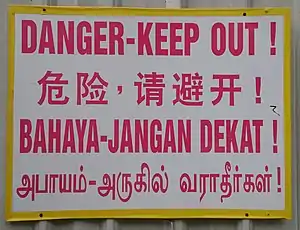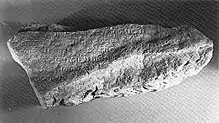.jpg.webp) Map of Singapore Singapore (/ˈsɪŋ(ɡ)əpɔːr/ ⓘ SING-(g)ə-por), officially the Republic of Singapore, is an island country and city-state in maritime Southeast Asia. It is located about one degree of latitude (137 kilometres or 85 miles) north of the equator, off the southern tip of the Malay Peninsula, bordering the Strait of Malacca to the west, the Singapore Strait to the south along with the Riau Islands in Indonesia, the South China Sea to the east, and the Straits of Johor along with the State of Johor in Malaysia to the north. The country's territory comprises one main island, 63 satellite islands and islets, and one outlying islet; the combined area of these has increased by approximately 25% since the country's independence as a result of extensive land reclamation projects. It has the second highest population density of any country in the world, although there are numerous green and recreational spaces as a result of urban planning. With a multicultural population and in recognition of the cultural identities of the major ethnic groups within the nation, Singapore has four official languages: English, Malay, Mandarin, and Tamil. English is the lingua franca, with its exclusive use in numerous public services. Multi-racialism is enshrined in the constitution and continues to shape national policies in education, housing, and politics.
Singapore's history dates back at least eight hundred years, having been a maritime emporium known as Temasek and subsequently a major constituent part of several successive thalassocratic empires. Its contemporary era began in 1819, when Stamford Raffles established Singapore as an entrepôt trading post of the British Empire. In 1867, the colonies in Southeast Asia were reorganised, and Singapore came under the direct control of Britain as part of the Straits Settlements. During World War II, Singapore was occupied by Japan in 1942 and returned to British control as a separate Crown colony following Japan's surrender in 1945. Singapore gained self-governance in 1959 and, in 1963, became part of the new federation of Malaysia, alongside Malaya, North Borneo, and Sarawak. Ideological differences, most notably the perceived encroachment of the egalitarian "Malaysian Malaysia" political ideology led by Lee Kuan Yew into the other constituent entities of Malaysia—at the perceived expense of the bumiputera and the policies of Ketuanan Melayu—eventually led to Singapore's expulsion from the federation two years later; Singapore became an independent sovereign country in 1965. After early years of turbulence and despite lacking natural resources and a hinterland, the nation rapidly developed to become one of the Four Asian Tigers. With its growth based on international trade and economic globalisation, it integrated itself with the world economy through free trade with minimal-to-no trade barriers or tariffs, export-oriented industrialisation, and the large accumulation of received foreign direct investments, foreign exchange reserves, and assets held by sovereign wealth funds. As a highly developed country, it has the highest GDP per capita (PPP) in the world. Identified as a tax haven, Singapore is the only country in Asia with a AAA sovereign credit rating from all major rating agencies. It is a major aviation, financial, and maritime shipping hub and has consistently been ranked as one of the most expensive cities to live in for expatriates and foreign workers. Singapore ranks highly in key social indicators: education, healthcare, quality of life, personal safety, infrastructure, and housing, with a home-ownership rate of 88 percent. Singaporeans enjoy one of the longest life expectancies, fastest Internet connection speeds, lowest infant mortality rates, and lowest levels of corruption in the world. Singapore is a unitary parliamentary republic with a Westminster system of unicameral parliamentary government, and its legal system is based on common law. While the country is a multi-party democracy with free elections, the government under the People's Action Party (PAP) wields significant control and dominance over politics and society. The PAP has governed the country continuously since full internal self-government was achieved in 1959, currently holding 79 out of 93 elected seats in Parliament. One of the five founding members of ASEAN, Singapore is also the headquarters of the Asia-Pacific Economic Cooperation Secretariat, the Pacific Economic Cooperation Council Secretariat, and is the host city of many international conferences and events. Singapore is also a member of the United Nations, the World Trade Organization, the East Asia Summit, the Non-Aligned Movement, and the Commonwealth of Nations. (Full article...)Selected article -.jpg.webp) Detail of a 1620 "Map of Sumatra" by Hessel Gerritz, a cartographer with the Hydrographic Service of the Dutch East India Company. The location of the island of "Pedrablanca" (Pedra Branca) is marked. The Pedra Branca dispute was a territorial dispute between Singapore and Malaysia over several islets at the eastern entrance to the Singapore Strait, namely Pedra Branca (previously called Pulau Batu Puteh and now Batu Puteh by Malaysia), Middle Rocks and South Ledge. The dispute began in 1979 and was largely resolved by the International Court of Justice (ICJ) in 2008, which opined that Pedra Branca belonged to Singapore and Middle Rocks belonged to Malaysia. Sovereignty over South Ledge belongs to the state in the territorial waters of which it is located. In early 1980, Singapore lodged a formal protest with Malaysia in response to a map published by Malaysia in 1979 claiming Pedra Branca. In 1989 Singapore proposed submitting the dispute to the ICJ. Malaysia agreed to this in 1994. In 1993, Singapore also claimed the nearby islets Middle Rocks and South Ledge. In 1998 the two countries agreed on the text of a Special Agreement that was needed to submit the dispute to the ICJ. The Special Agreement was signed in February 2003, and the ICJ formally notified of the Agreement in July that year. The hearing before the ICJ was held over three weeks in November 2007 under the name Sovereignty over Pedra Branca/Pulau Batu Puteh, Middle Rocks and South Ledge (Malaysia v. Singapore). (Full article...)Selected picture Raffles Place Saint Joseph's Church on Victoria Street during a Good Friday evening procession. Read more... General imagesThe following are images from various Singapore-related articles on Wikipedia.
Selected biography -
Ho Yuen Hoe (simplified Chinese: 何润好; traditional Chinese: 何潤好; pinyin: Hé Rùnhǎo; 18 February 1908 – 11 January 2006), later in life but rarely known by her Dharma name, Venerable Jing Run (simplified Chinese: 净润法师; traditional Chinese: 淨潤法師; pinyin: Jìngrùn Fǎshī), was a Buddhist nun affectionately known as Singapore's "grand dame of charity" in recognition of her lifelong devotion in helping the old and needy. She was the abbess of Lin Chee Cheng Sia Temple and the founder in 1969 of the Man Fut Tong Nursing Home, the first Buddhist nursing home. Venerable Ho was relatively unknown to the public until 1996, when she was featured in a television programme – The Extraordinary People – at the age of 88. As a result, the public became more familiar with her work and her nursing home. In 2001, she received the Public Service Award from the President of Singapore in recognition of her contribution to the country. Until her hospitalisation in November 2005 she was actively involved in charity work. Venerable Ho died on 11 January 2006, a month before what would have been her 98th birthday. (Full article...)
Did you know (auto-generated)
In this month
More did you know - Golden Mile Complex
Selected panoramaThe Changi Beach Park (Chinese: 樟宜海滨公园) is a beach park located at the northeastern tip of Singapore. The 28-hectare Changi Beach Park is one of the oldest coastal parks in Singapore. The park is 3.2 km long with stretches of sandy beaches between Changi Point and Changi Ferry Road. Singapore topicsRelated portalsSoutheast Asia Other Countries Tasks Things you can do
CategoriesSelect [►] to view subcategories
 Singapore Central Business District Singapore Singapore-related lists Buildings and structures in Singapore Singaporean culture Economy of Singapore Education in Singapore Environment of Singapore Geography of Singapore Government of Singapore Health in Singapore History of Singapore Organisations based in Singapore People from Singapore Politics of Singapore Society of Singapore Singapore stubs WikiprojectsRelated Wikiprojects:
Associated WikimediaThe following Wikimedia Foundation sister projects provide more on this subject:
Discover Wikipedia using portals
|




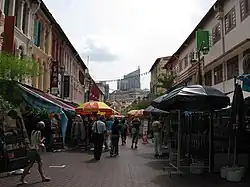
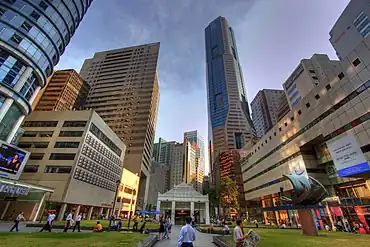










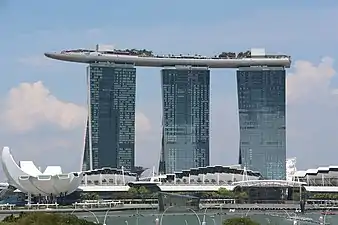




.jpg.webp)
.jpg.webp)

%252C_St_Andrew's_Cathedral_--_2019_--_4534.jpg.webp)

_by_Lieutenant_Philip_Jackson.jpg.webp)






